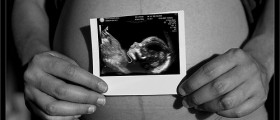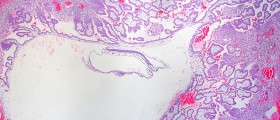
Introduction
Pelvic inflammatory disease or shortened PID can develop as a complication of some sexually transmitted diseases. PID in women is an infection of the uterus and/or the ovaries and fallopian tubes which connect the uterus and the ovaries. Bacteria or fungus in the lower part of the vagina can move and reach the upper parts of reproductive organs and infect the ovaries fallopian tubes (salpingitis) and the uterus (endometritis). PID is considered to be a serious infection if it affects the ovaries.
Symptoms
Women with PID feel changes in the vaginal secretions, have irregular bleeding and pains. If left untreated PID can lead to infertility. In the United States, about a million women a year experience this problem and risk being infertile or having pregnancy outside the uterus. It is estimated that one woman out of five with PID will remain sterile. Pelvic inflammatory disease is common among sexually active women because they are susceptible to many infections during sexual intercourse if they do not use condoms. Younger women under 25 are more probable to get PID than the older women. Having some other infections or any sexually transmitted disease increases the risk of having PID. This inflammatory disease can reoccur after treated pelvic inflammation earlier in life.
An infected partner passes on the infection to a woman. The most common bacterial infections are chlamydia and gonorrhea. In great number of cases chlamydia and gonorrhea infection moves upwards so the lower part of the uterus, medically termed cervix, is the first affected and there is the possibility of the ovaries to be affected which is the worst case of PID. Some surgeries, abortion and douching may have a higher risk of getting PID.
The first sign of PID is the pain in the lower stomach that can spread to other parts. The pain is not that severe at first, but it may intensify as the days go by. The pains are usually felt at the end of the menstrual cycle. A woman also has some vaginal discomforts. Vaginal discharge increases and it is of unpleasant smell. As the infection progresses the symptoms worsen. Many women have difficulties while urinating or having sexual intercourse. The vaginal secretion changes color to yellow, green. Other signs includes fever and weakness. Woman can have irregular menstrual bleeding. The symptoms may be vague and not easily recognized.
Pains in the whole stomach indicate that the infection may have spread. The reason for this may be the blocked fallopian tubes or infected abdominal walls. It is noted that PID may affect the liver when Fitz-Hugh-Curtis syndrome is developed. Approximately 15 percent of women develop abscess forms, accumulated pus (dead neutrophils) especially in the fallopian tubes. Pus fluid can spread to the pelvic region and have severe consequences, a woman feels dizzy, weak, can even faint. Rarely, this can spread to the blood and cause sepsis.
The most important thing to note is that pelvic inflammatory disease can be prevented. Regular gynecological tests can prevent further infections of reproductive organs.

















Your thoughts on this
Loading...